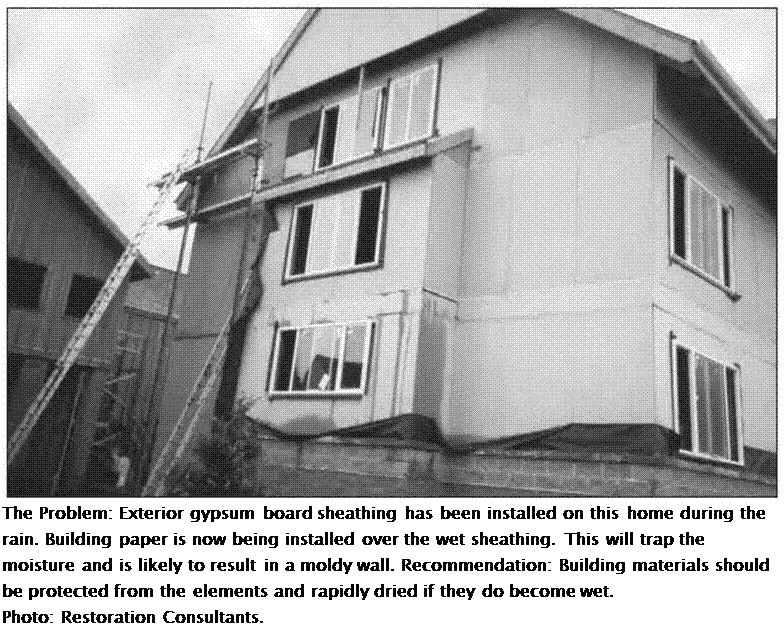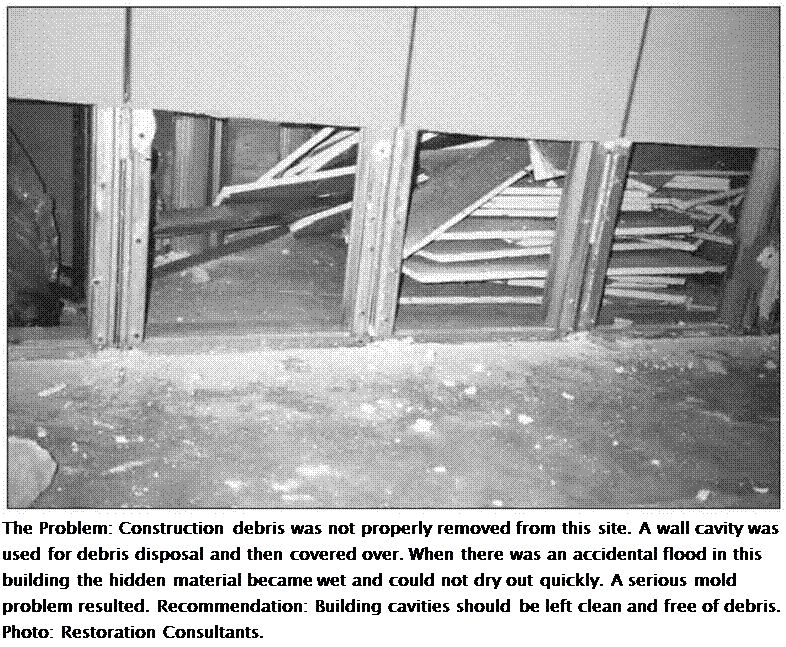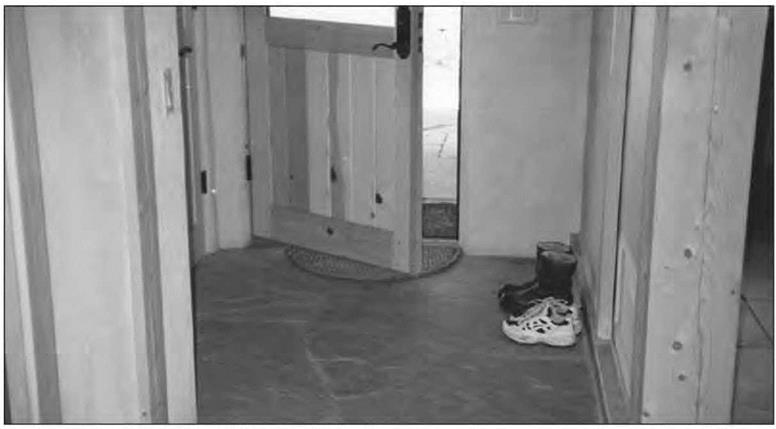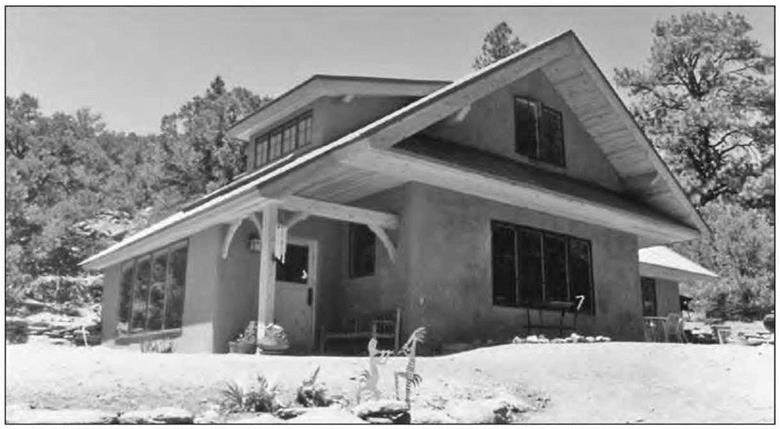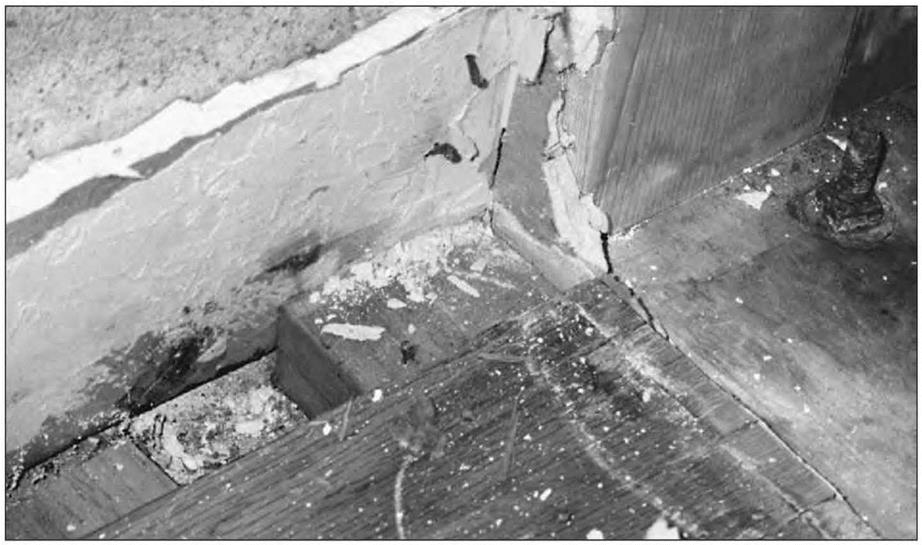Anderson, Nina et al. Your Health and Your House. Keats Publishing, 1995. A resource guide to health symptoms and the indoor air pollutants that aggravate them.
Banta, John. Extreme Weather Hits Home: Protecting Your Buildings from Climate Change. New Society Publishers, 2007. Discusses measures that can be taken to prevent or lessen the effects of climate change on your home.
Bower, John. Healthy House Building: A Design and Construction Guide. Healthy House Institute, 1993. Step-by-step guide illustrating the authors construction of a model healthy house.
Bower, John. The Healthy House: How to Buy One, How to Build One, How to Cure a Sick One. 4th ed., Healthy House Institute, 2000. Describes in great depth a three-step approach consisting of elimination, isolation, and ventilation. As many toxins as possible are identified and eliminated; a tight air barrier isolates occupants from infiltration; and air is exchanged and purified by means of mechanical ventilation. The author speaks from firsthand experience in successfully creating a chemical-free sanctuary for his spouse.
Breecher, Maury M. and Shirley Linde. Healthy Homes in a Toxic World. John Wiley and Sons, 1992. The authors identify household health hazards, the human health conditions associated with them, and solutions for healthier environments.
Colburn, Theo et al. Our Stolen Future. Plume, 1997. A gripping account of the scientific research linking reproductive failures, birth defects, and sexual abnormalities to synthetic chemicals that mimic natural hormones, causing disruption of the endocrine system.
Dadd, Debra. Nontoxic, Natural and Earthwise. J. P. Tarcher, 1990. A practical, easy-to-use guide to nontoxic alternatives for cleaning products, personal care products, lawn and garden supplies, baby care items, pet care products, and household furnishings.
The Green Guide. Available from Mothers and
Others for a Livable Planet, 40 West 20th St., New York, NY 10011, 888-ECO-INFO. This newsletter discusses various relevant topics and promotes safe and ecologically sound consumer choices.
Green, Nancy Sokol. Poisoning Our Children. The Noble Press, 1991. Tire contemporary pesticide problem comes alive as the author relates the nightmare she endured after unwittingly poisoning herself in her own home with repeated pesticide exposures.
International Institute for Bau-Biologie & Ecology Correspondence Course. Available through Helmut Ziehe, IBE, Box 387, Clearwater FL 33757, 727-461-4371, buildingbiology. net. This certified home-study course has been translated into English from the original work of Anton Schneider, the driving force behind the Bau-Biologie movement in Europe. The course provides a comprehensive discussion of the interrelationship of the built environment, human health, and planetary ecology.
Lawson, Lynn. Staying Well in a Toxic World: Understanding Environmental Illness, Multiple Chemical Sensitivities, Chemical Injuries, and Sick Building Syndrome. Lynnword Press, 1994.
A highly readable, informative, and comprehensive overview of the devastating effects of toxic surroundings by a former medical writer with a thorough understanding of the contemporary chemical problem.
Leclair, Kim and David Rousseau. Environmental by Design. Hartley and Marks, 1993. Provides a “cradle to grave” environmental analysis of common building materials.
Lstiburek, Joseph. Builders Guides. Available
through The Energy & Environmental Building Association, 10740 Lyndale Avenue South, Suite 10W, Bloomington, MN 55420,952-881-1098, eeba. org. A series of climate-based field guides with explanations, details, and techniques to effectively implement energy – and resource – efficient residential construction.
Our Toxic Times. Published by the Chemical Injury Information Network, PO Box 301, White Sulphur Springs, MT 59645,406-547-2255. A useful newsletter for people interested in understanding how chemicals impact human health.
Pearson, David. The Natural House Book: Creating a Healthy, Harmonious, and Ecologically Sound Home Environment. Fireside, 1989. The author gives a thoughtful explanation of the human health and environmental impacts associated with standard building practices. He then shows an inspiring array of natural building materials and systems from around the world.
Rea, William J. Optimum Environments for Optimum Health and Creativity. Crown Press, 2002. Rea is the founder of the Environmental Health Center in Dallas. He has extensive experience working with patients who have extreme multiple chemical sensitivities. His book is a guide for healthier homebuilding practices. It has broad general application and a special emphasis on strategies for creating clean homes for chemically sensitive individuals.
Rogers, Sherry A. Tired or Toxic? A Blueprint for Health. Prestige Publishing, 1990. Detailed and comprehensive medical explanations of how chemicals are impacting human health.
Roodman, David Malin and Nicholas Lenssen. A Building Revolution: How Ecology and Health Concerns Are Transforming Construction. Worldwatch Paper 124,1995.
Schoemaker, Joyce and Charity Vitale. Healthy Homes, Healthy Kids. Island Press, 1991. The authors discuss ways to protect children from everyday environmental hazards found in the home.
Stih, Daniel. Healthy Living Spaces: Top 10 Hazards Affecting Your Health. Healthy Living Spaces, 2007. Stih speaks from his experience as a home inspector about common causes of sick buildings and what you can do to prevent and remedy these hazards.
Thompson, Athena. Homes That Heal and Those That Don’t: How Your Home Could Be Harming Your Family’s Health. New Society Publishers,
2004. A thorough guide that takes the homeowner on a room-by-room tour of the home, identifying sources of pollution and offering healthy solutions for each potential problem.
Thrasher, Jack and Alan Broughton. The Poisoning of Our Homes and Workplaces: The Indoor Formaldehyde Crisis. Seadora, 1989. Detailed analysis of the indoor formaldehyde crisis in the United States.
Venolia, Carol. Healing Environments: Your Guide to Indoor Well-being. Celestial Arts, 1988. The author takes the reader through a series of environmental awareness-raising exercises, expanding a holistic approach to health and the built environment that includes the wellness of body, mind, and spirit.
Venolia, Carol and Kelly Lerner. Natural Remodeling for the Not-So-Green House. Lark Books, 2006. This practical and inspiring book, written by two architects, is a guide to remodeling with planetary and personal health in mind.
Wilson, Cynthia. Chemical Exposure and Human Health. McFarland, 1993. A reference guide to 314 chemicals, with a list of symptoms they can produce and a directory of organizations.
Zamm, Alfred and Robert Gannon. Why Your House May Endanger Your Health. Simon and Schuster, 1982. Based on a ten-year scientific study, this book explains how millions of Americans may be suffering ill health because their homes have become toxic chambers. The authors discuss remedies for many of the major health hazards found in the home.
Retail Outlets and Catalog Distributors
Allergy Relief Store, 250 Watson Glen, Franklin, TN 37064, 800-866-7464,615-790-3525, allergyrelief store. com. Mail order catalog offering supplies and building products for the allergy-free home.
Allergy Resources, 557 Burbank St., Suite K, Broomfield, CO 80020,800-873-3529. Nontoxic cleaning compounds and body care products.
American Environmental Health Foundation, 8345 Walnut Hill Lane, Suite 225, Dallas, TX 75231, 800-428-2343,214-361-9515, aehf. com. Sells a wide range of household, building, personal care, and medical products as well as organic clothing, books, and vitamins.
Aubrey Organics, 4419 N. Manhattan Ave., Tampa, FL 33614,800-282-7394, aubrey-organics. com. Over 200 hair, skin, and body care products made from herbs and vitamins, without synthetic chemicals.
Building for Health — Materials Center, PO Box 113, Carbondale, CO 81623,800-292-4838 (orders only), 970-963-043 7, buildingforhealth. com. Distributor of a wide variety of healthy building products. The owner, Cedar Rose, is also a building contractor who has practical experience with most products sold by the Center.
The Cutting Edge Catalog, PO Box 4158, Santa Fe, NM 87502,800-497-9516, cutcat. com. Full-line catalog with state of the art products for immune system protection.
Dasun Company, PO Box 668, Escondido, CA 92033,800-433-8929. Catalog sales of air and water purification products.
Eco Design/Natural Choice, 1365 Rufina Circle, Santa Fe, NM 87505,800-621-2591. Catalog sales of natural paints, stains, and healthy home products.
Eco Home Center, 3101 Main Ave., Suite 2, Durango, CO 81301,970-259-8326, ecohomecenter. com. Ecological building and home supplies.
Eco-Products, 3655 Frontier Ave., Boulder, CO 80301,303-449-1876, ecoproducts. com. Ecologically sound building products.
Environmental Home Center (ecohaus), 4121 ist Ave. South, Seattle, WA 98134,800-281-9785, 206-682-7332, environmentalhomecenter. com. Green building supplies and household products.
Green Nest, 18662 MacArthur Blvd., Suite 200, Irvine, CA 92612, (888) 473-6466, GreenNest. com. This on-line store is owned and operated by Lisa and Ron Beres, certified Baubiologists. The site is a source for a wide diversity of products and information for the healthy home.
Healthy Interiors (Casa Natura), 328 Sandoval St., Santa Fe, NM 87501,877-650-1600, 505-820-7634, casanaturainc. com. Organic mattresses, bedding, and clothing, wool carpeting, and wood furniture.
Janice’s, 30 Arbor St. South, Hartford, CT 06106, 800-526-4237 (orders), 860-523-4479 (information), janices. com. Supplier for natural and organic bedding and linens and hypoallergenic and unscented personal care products.
The Living Source, PO Box 20155, Waco, TX 76702, 254-776-4878 (customer service/orders), 800-662-8787 (voice mail orders), livingsource. com. Catalog sales of “products for the environmentally aware and chemically sensitive.”
NEEDS, 6010 Drott Dr., East Syracuse, NY 13057, 800-634-1380, needs. com. Mail order service offering a wide array of personal care products for the chemically sensitive.
Nirvana Safe Haven (formerly the Nontoxic Hotline), 3441 Golden Rain Rd., Suite 3, Walnut Creek, CA 94595,800-968-9355, nontoxic. com. Catalog sales of products for achieving and maintaining indoor air quality and safety for homes, offices, and automobiles.
Planetary Solutions, 2030 17th St., Boulder, CO 80302,303-442-6228, planetearth. com. Environmentally sound materials for interiors.








